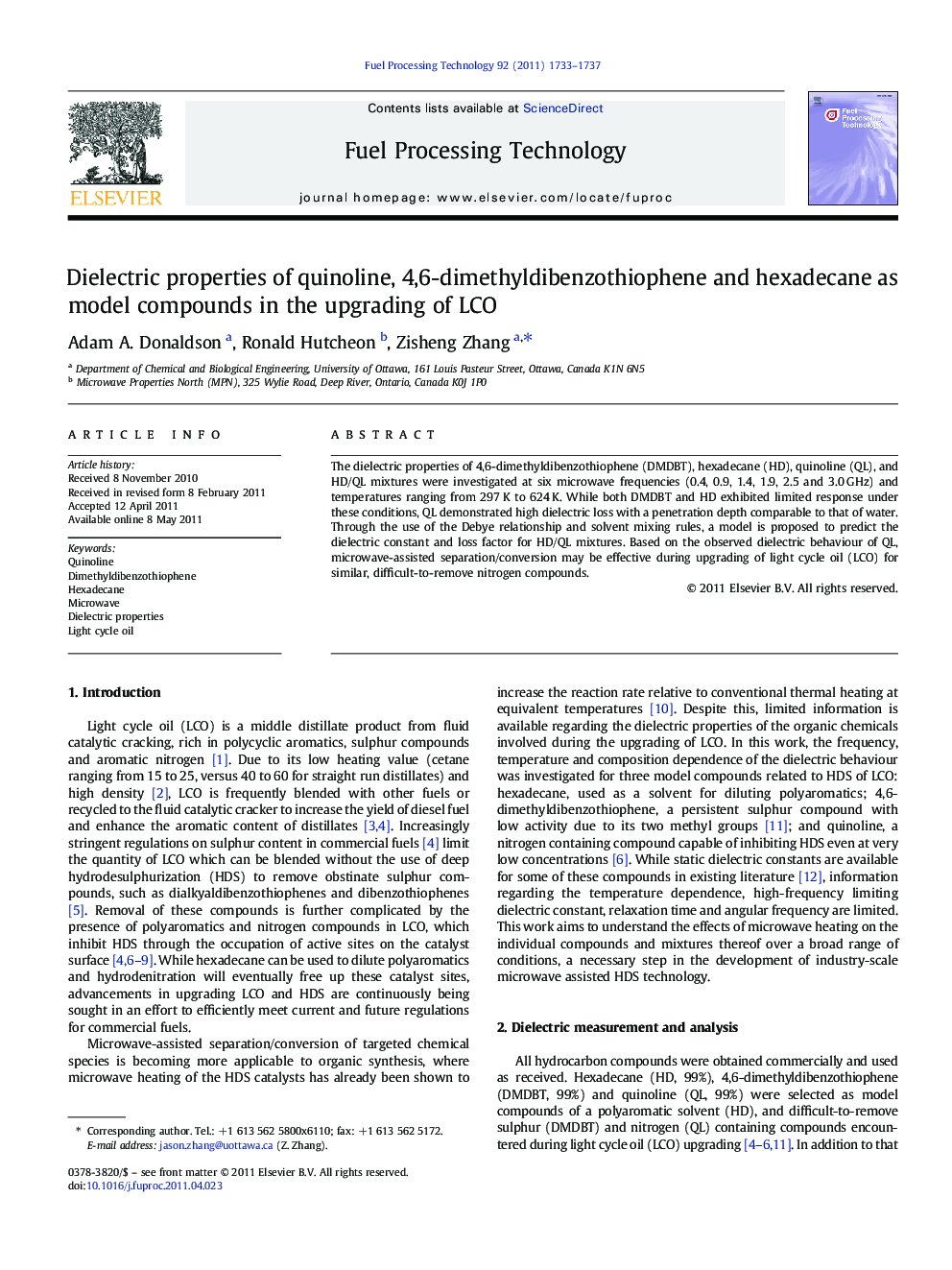| Article ID | Journal | Published Year | Pages | File Type |
|---|---|---|---|---|
| 210717 | Fuel Processing Technology | 2011 | 5 Pages |
The dielectric properties of 4,6-dimethyldibenzothiophene (DMDBT), hexadecane (HD), quinoline (QL), and HD/QL mixtures were investigated at six microwave frequencies (0.4, 0.9, 1.4, 1.9, 2.5 and 3.0 GHz) and temperatures ranging from 297 K to 624 K. While both DMDBT and HD exhibited limited response under these conditions, QL demonstrated high dielectric loss with a penetration depth comparable to that of water. Through the use of the Debye relationship and solvent mixing rules, a model is proposed to predict the dielectric constant and loss factor for HD/QL mixtures. Based on the observed dielectric behaviour of QL, microwave-assisted separation/conversion may be effective during upgrading of light cycle oil (LCO) for similar, difficult-to-remove nitrogen compounds.
Research Highlights► Hexadecane, quinoline and 4,6-DMDBT as model compounds in LCO upgrading. ► Temperatures of 297 to 624 K, microwave freq.: 0.4, 0.9, 1.4, 1.9, 2.5 and 3.0 GHz. ► Both Hexadecane and 4,6-DMDBT nearly transparent to microwave radiation. ► Quinoline exhibits high dielectric loss, with a penetration depth comparable to water. ► Debye relationship and solvent mixing rules accurately described mixture properties.
